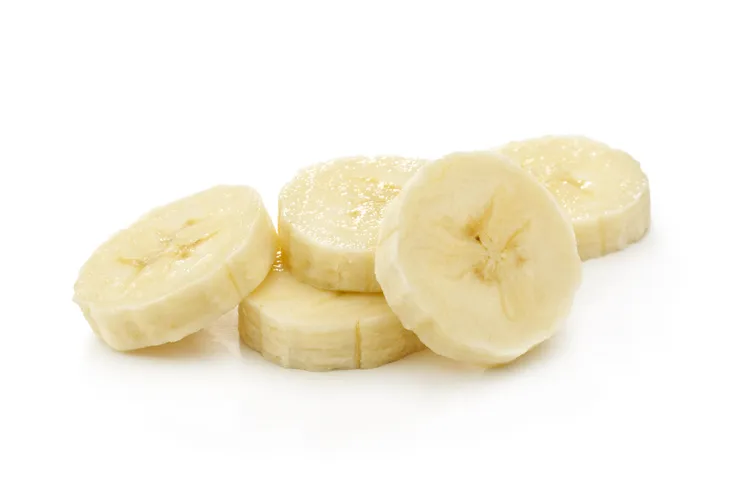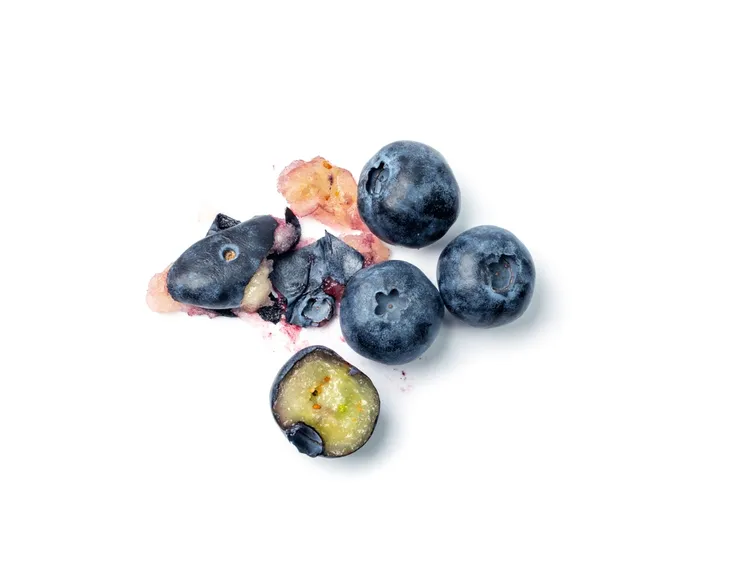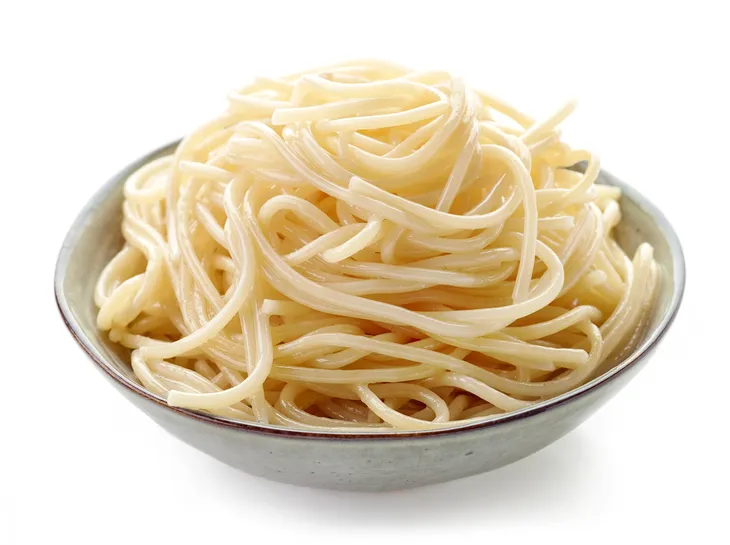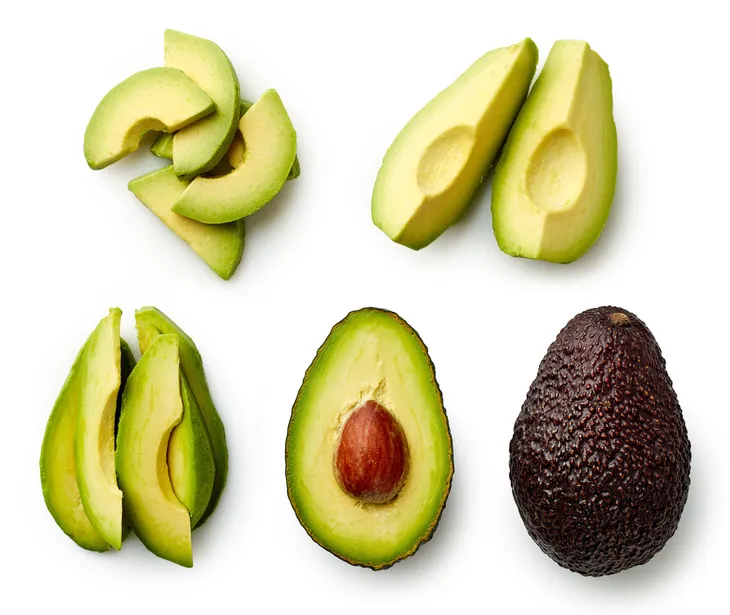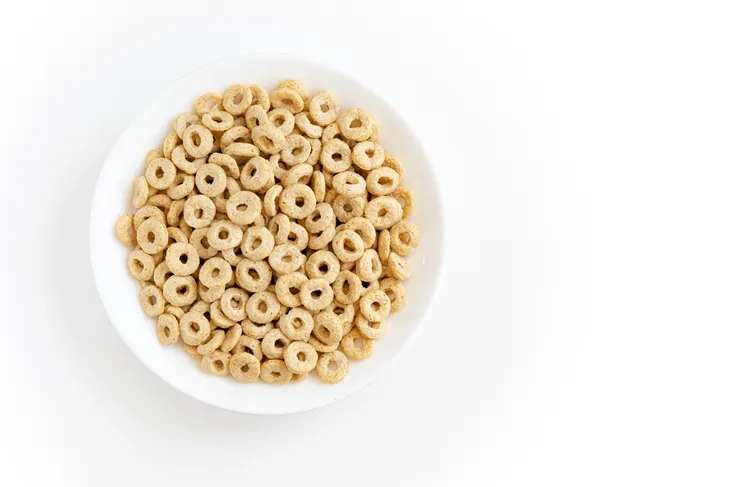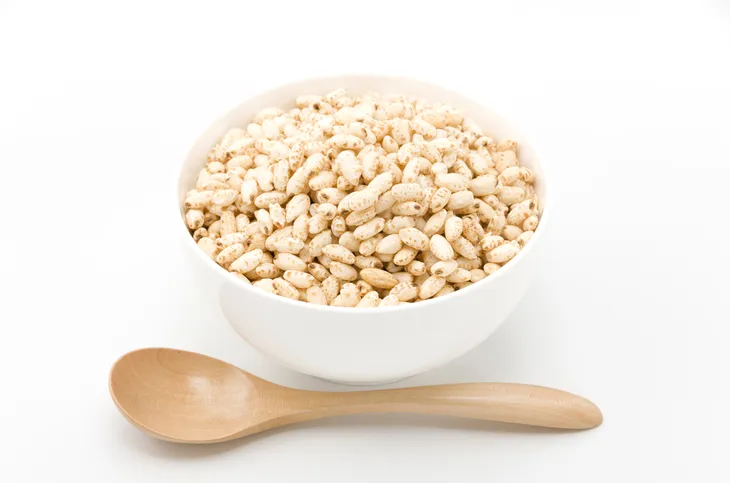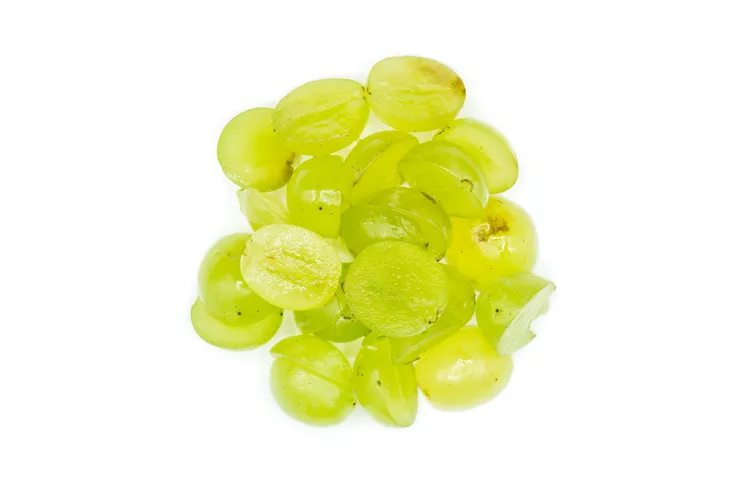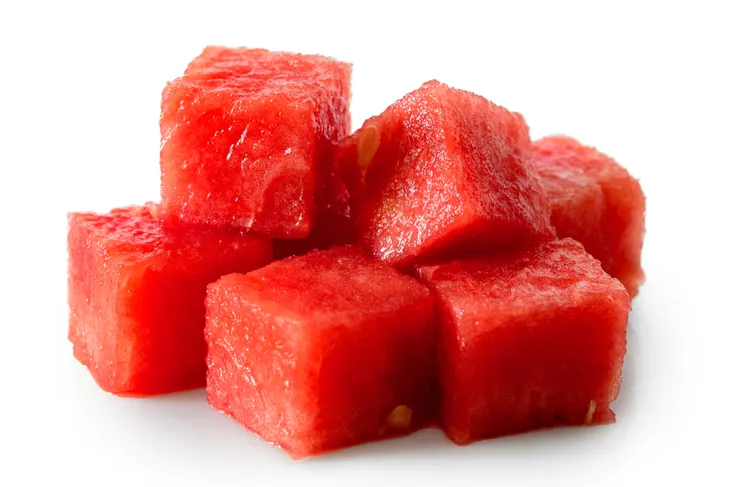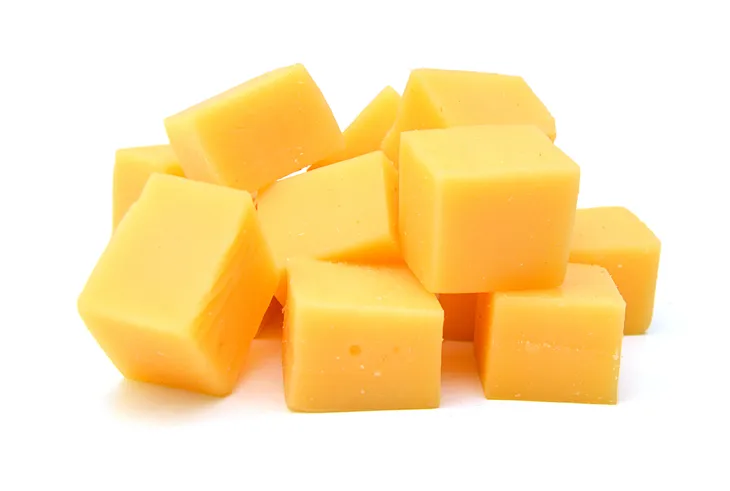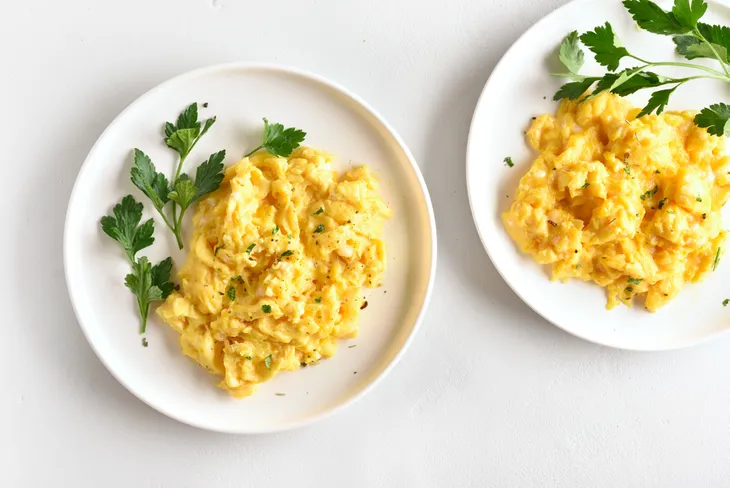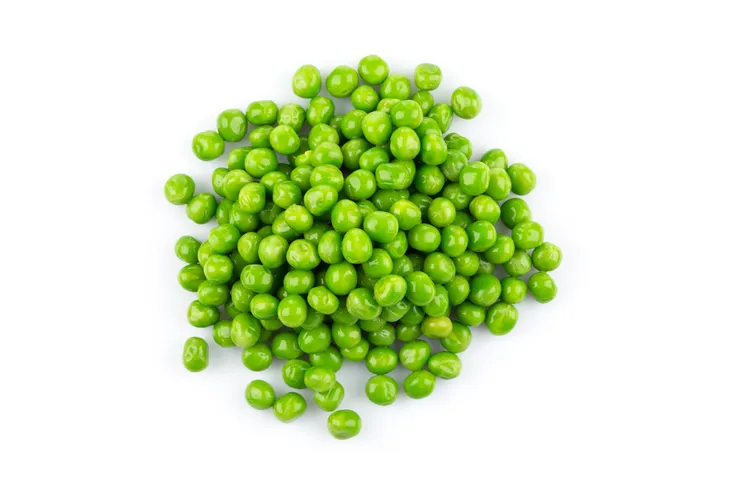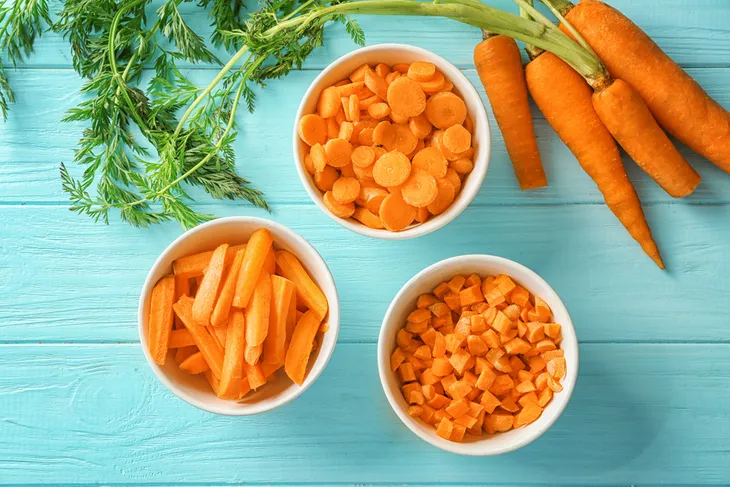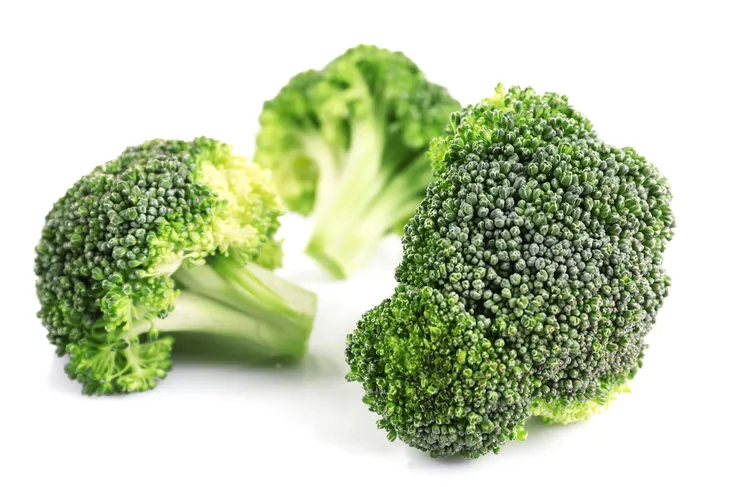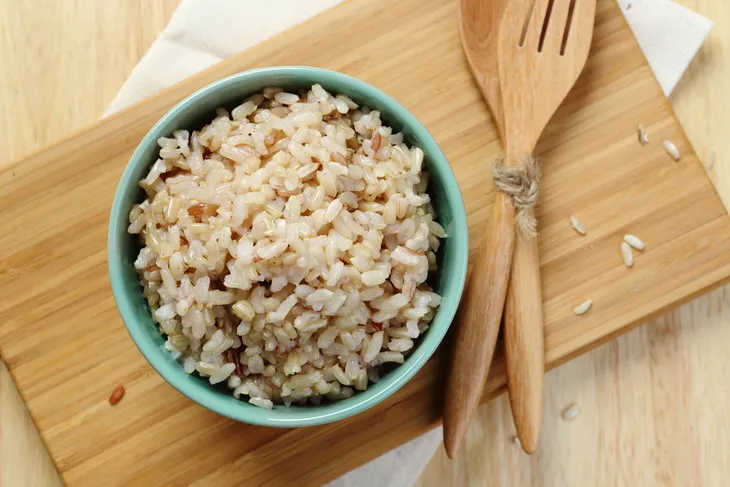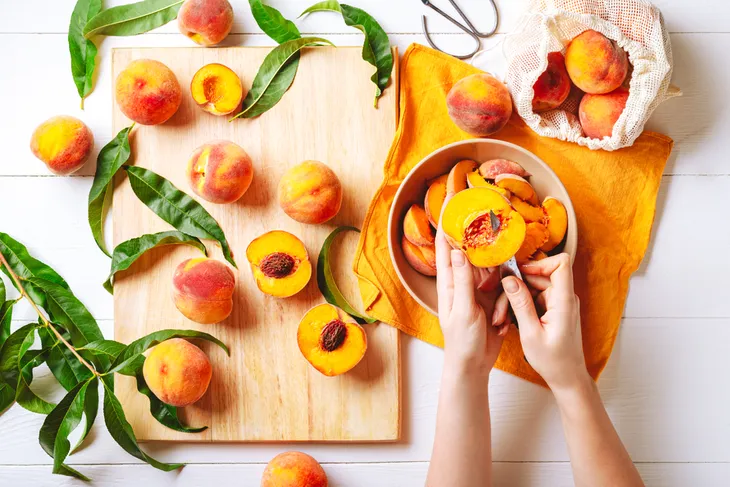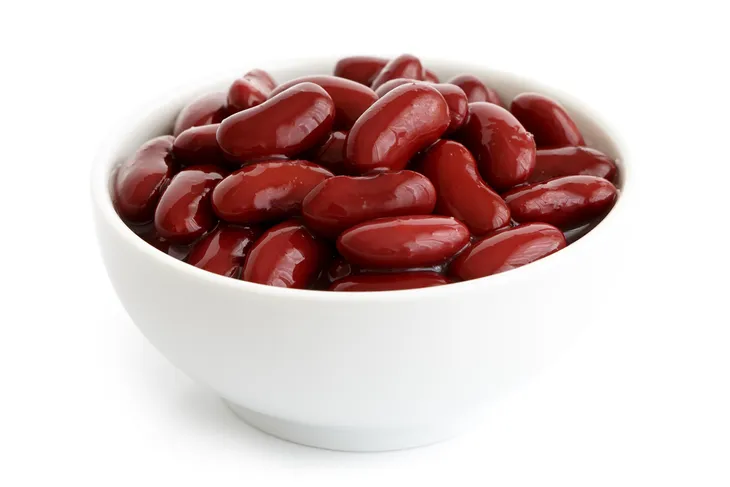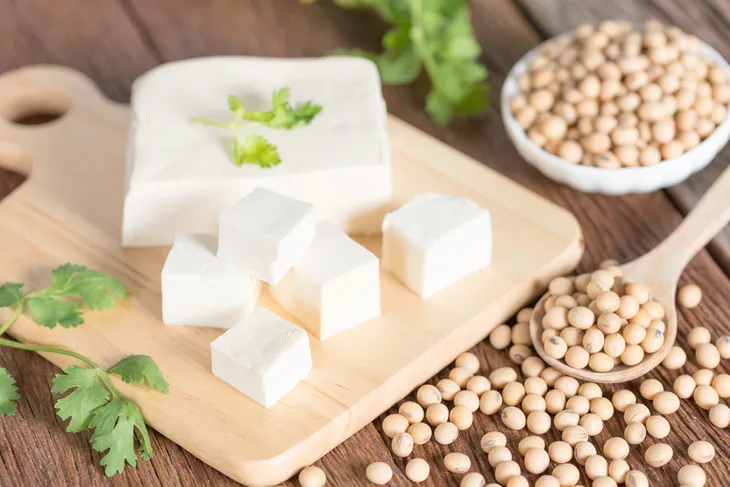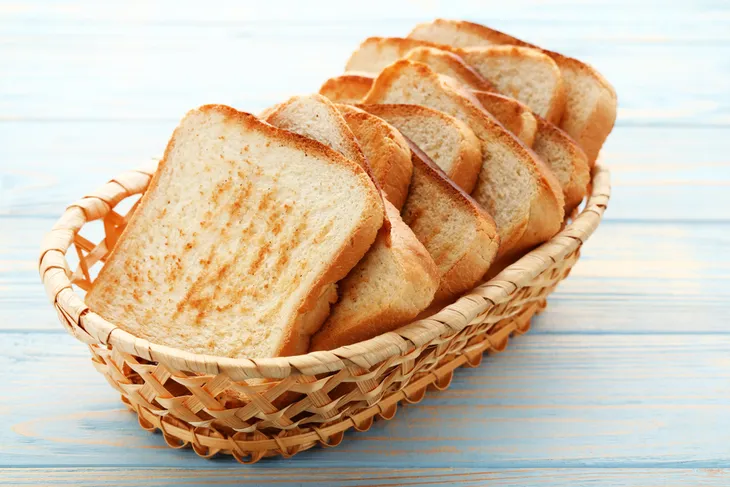Once your child is able to sit up mostly unsupported and can bring toys to their mouth, it is generally a safe time to start your little one on finger foods. Most parents introduce their little one to solids at 6 months of age, starting off with purees. However, some parents choose to skip this spoon-feeding phase and allow their child to grasp soft foods and feed themselves.
Whenever your little one is ready, there are a wide variety of foods that they can enjoy. Repeated exposure to a flavor can help reduce picky eating later on, so don’t shy away from offering a food that your little one initially rejected — they might come around to it! Always try to include a wide range of naturally sweet, savory and bitter flavors, and really awaken their taste buds to different flavors. Here are some favorite first finger foods to serve your baby…
Sliced Banana
Sliced banana makes a great first finger food for babies just starting to experiment with solids. Many pediatric sources recommend cooking fruit until baby is 8 months old, however bananas are an exception. Whereas most foods being introduced to babies requires cooking until it is soft enough to mush easily in baby’s mouth, bananas are already the perfect texture! Especially when ripe! Always remember to cut your baby’s food into tiny pieces so it will not present a choking hazard.
Nutritiously speaking, bananas are also great because they are full of potassium and magnesium, and are rich in pectin — a soluble dietary fiber that naturally detoxifies and is great for digestion. However, make sure you don’t feed your little one too much, because the high fiber content may cause them to become constipated.
Sliced Blueberries
Blueberries are full of antioxidants and are great for babies and adults alike. They are a good source of vitamin C, vitamin K, fibre and manganese. There are two varieties of blueberries — high-bush blueberries and low-bush (or wild berries) that are smaller in size, but richer in antioxidants. Whichever variety you are able to find, blueberries are considered one of the most nutritious berries, and powerhouses of energy and nutrients.
As silly as it may look cutting these already small berries into pieces, it is completely necessary. Even the tiniest of blueberries can easily become lodged in a baby’s throat and block their airways. So makes sure you cut them into baby-sized finger-tip pieces or if they are soft enough squish them down to ensure they are easy to eat and swallow.
Over-Cooked Pasta, Diced
You may want to hold the tomato sauce (or keep a washcloth at the ready) when serving up pasta as a finger food to your baby! Spaghetti…Fettucini…Fusilli…whatever type of pasta you choose, cook it until it is soft enough for their tiny mouth to handle. Boil the pasta for the amount of time specified by the package, then remove a piece to test for tenderness.
If you are able to easily mash the pasta to a paste between your tongue and the roof of your mouth, it is tender enough for your baby to gum. If not, continue to boil the remaining pasta, and check for tenderness every few minutes. Lastly, drain the pasta and allow it too cool, then break or cut into bite-sized pieces before serving to your baby.
Pea-Sized Pieces Of Cooked Chicken (Or Fish Or Ground Beef)
Chicken is packed with protein and is a source of vitamin B6 which is used to help the body extract energy from food. It is important that babies start eating foods containing adequate amounts of protein to support their rapid growth.
If little ones struggles with texture of meat, there are other ways to get these protein sources into their diet. Try transferring cooked chicken (or your meat source of choice) into a food processor and blend into a puree for 1 minute. The texture will be clumpy, but if you add some softened sweet potato to smooth it out, it should be more palatable for your little one. They still can eat this with their hands, but it might be a bit more messy, so keep a washcloth close by!
Ripe Avocado, Sliced Or Diced
Ripe avocados make a perfect smooth and creamy introductory finger food for babies. Babies need carbohydrates, fats, and protein for their growth during the crucial first year and even second year of life. Avocados are full of healthy monounsaturated fats, and are naturally nutrient dense containing nearly 20 vitamins and minerals to boot!
Avocados are also a good source of fiber. ½ cup serving contains 4.9 grams of fiber, which is another crucial nutrient for little ones to obtain. Cut into thin slices or small cubes for your little one easily gum through. Avocados are a perfect food that will be readily accepted as your baby begins eating solids.
Plain Cheerios (Oat Cereal)
Many parents have offered up this oat cereal to their little ones to enjoy and practice working on their pincer grasp. Made from whole grain oats, and without artificial flavors and colors, they’re low in fat and are cholesterol free. They are easily dissolvable, so they pose little choking hazard for babies.
Plain Cheerios make a convenient snack too, as parents can easily throw some into a ziplock bag for an on-the-go snack for their little ones. But like any food, moderation is key. This tasty cereal may be low in sugar, but a one cup serving does contain 230 milligrams of salt, which is over half of the recommended intake of salt for babies up to 12 months old, which is less than 1g of salt a day (less than 400 mg of sodium). So keep an eye on portion sizes!
Puffed Rice Cereal
Gerbers Puff Rice Cereal was a favorite of my son when he started finger foods. Gerber offers a selection of flavored wholesome snacks that are designed with your little one’s development and good nutrition in mind. These puffed rice snacks make a great introductory finger food snack to help your little one develop their fine motor skills.
Made with whole grains and not added salt, these tasty snacks dissolve easily in babies mouth when they mix with saliva, ensuring baby won’t choke. They are also an excellent source of iron and zinc, but again, still watch portion control. Your little one may be begging for more, but try to only offer this snack once per day, as your baby needs a wide variety of foods to thrive.
Grapes, peeled, seedless, and sliced
Grapes are not only delicious, but they are high in polyphenols — antioxidants that help fight free radicals in the body. Another interesting fact about grapes is that they are the only fruit found to contain the sleep-regulating hormone melatonin. By adding them regularly to your little ones diet, it will help boost their natural sleep-wake cycle in their body, allowing them to get to sleep faster each night!
One of the troubles with feeding grape to babies is the skins of the grapes. Also, because it’s round in size, it’s a high risk food for choking. You may introduce grapes as a finger food to your little one, however it is best to peel and cut them into very small pieces so they are easier for baby to mush up and swallow. Be sure to remove seeds or purchase seedless grapes.
Seedless Watermelon
Watermelons are comprised of about 92-percent water. It not only makes a refreshing snack but this fruit is also soaked with nutrients. Watermelons are an excellent source of vitamins A, B6 and C, lycopene, antioxidants and amino acids.
Parents can introduce their child to cantaloupe and melons at 8 months of age, though some introduce it as early as 6 months of age. Some babies may experience rashes from melons of all types. The rash is often due to the melons acidity, and not to an allergy. Melons are sure to be one of your baby’s favorite foods. Remember to keep the pieces small and thin, so baby can easily mush it up and swallow.
Small Chunks of Soft Cheese
Cheese is a great finger food for babies, providing them with calcium, good fats and protein too. Calcium is a key nutrient for healthy bones and teeth, which is so important for your little ones growth and development. You can introduce your baby to the wonderful world of cheese by offering lighter tasting cheeses like Colby, Jack, Mild Cheddar or even cottage cheese.
Cottage cheese can be a fun (but messy) finger food for babies. Cottage cheese is rich in protein, vitamins and minerals, however keep portion sizes small as it can be high in sodium. Another great way to incorporate cheese into your little ones finger food diet is by melting cheese over softened vegetables or adding it to meat purees.
Eggs (Chopped Hard Boiled or Scrambled)
Eggs are loaded with high-quality proteins, vitamins, minerals, good fats and various trace nutrients. They are rich in iron, phosphorus, selenium and vitamins A, B12, B2 and B5 – to name a few. You can give your baby the entire egg (yolk and white) around 6 months. Whether you hard boil and chop or scramble it — both make great finger foods for babies.
If your family has a history of egg allergies, some doctors may suggest waiting until after 12 months to introduce your little one to eggs. It is very rare for someone to be allergic to the yolk, however egg whites contain four proteins that can range from mildly to highly allergic. If you have any concerns, talk to your pediatrician!
Cooked Peas
Green peas are a very good source of vitamin K, manganese, dietary fiber, vitamin B1, copper, vitamin C, phosphorus and folate. They are also a good source of vitamins B2 and B6, niacin, zinc, protein, magnesium, iron, potassium and calcium! For such tiny veggies they sure are packed with a lot of nutrient-punch!
Did you know that one cup of peas contains more protein than a tablespoon of peanut butter? Peas would make a great first ‘green’ food for a baby. Steaming or boiling in a scant amount of water is the best way to cook peas for your little one. For a nice flavor you can trying cooking peas in a homemade vegetable or chicken stock for a little extra taste boost!
Orange Veggies (Carrots and Sweet Potato)
Another great finger food for babies is cooked orange vegetables like carrots or sweet potatoes. Carrots are high in beta carotene and are often one of baby’s first foods. When cooked until they are soft, they are easy to digest and are packed full of nutrients like vitamin A and C, and calcium.
Another delicious orange vegetable is sweet potato (yam). These tasty spuds make another wonderful choice for baby’s first finger food. Much like carrots, sweet potatoes are also high in vitamin A and beta carotene. Additionally, they are high in potassium, and also contain good amounts of vitamin E, calcium and folate. Steam until soft and cut into tiny pieces for easy handling and swallowing. These tasty vegetables are sure to please your little one!
Broccoli and Cauliflower Steamed
Broccoli is a very good source of dietary fiber, vitamins A, B1,B6, and E, manganese, magnesium, phosphorus, choline, potassium, copper, omega-3 fatty acids, protein, calcium, iron, niacin and selenium! That was an exhausting list of nutrients to list — it is no wonder parents are always telling their children to “eat your broccoli”.
Similarly, cauliflower contains a lot of the same nutrients including 77-percent of the daily recommended value of vitamin C in a serving. Although, your little one probably won’t eat and entire serving in one sitting, steamed broccoli or cauliflower would make a great finger food for little ones. Again, make sure it is steamed until it is super tender, so that it can easily be mashed up and swallowed. If your little one struggles with gas, you might want to keep portions small as it may disrupt their digestion.
Very Soft Brown Rice
When you start your baby on solid foods, experts tell you to begin with rice (cereal). This is because rice is known to be allergen free, and brown rice in particular is great because of its dense natural nutrition and fiber.
Remember to ensure your child’s diet is well balanced with meats, vegetables as well as grains. Brown rice should be cooked until it is soft and easy for baby to mush and swallow. For a little extra flavor and a nutritional boost, mix the cooked rice with some shredded cheese. Yum!
Ripe Stone Fruits (Peeled and Cubed)
Sweet ripened peaches, pears and plums are a wonderful snack for little ones, and would make excellent finger food dessert-like treats! Gently cook stone fruits and dice them into small, finger food sized pieces for your little one to enjoy. Pears are a great option as they are gentle on little tummys and are wonderful for babies who may be suffering from reflux.
Plums are high in fiber and natural sugars which help to maintain bowel regularity. Babies who struggle with constipation are often advised to incorporate plums or prunes into their diet for this reason. Whichever stone fruit you serve up, it is best to peel the fruit and cut into tiny bite-sized pieces for children who are under 12 months of age, as the skin may be difficult for them to eat.
Beans
Beans are a very inexpensive source of protein. Aside from the protein, complex carbs and fiber, beans contain a powerhouse of important nutrients for you baby’s growing body including antioxidants, iron, calcium, B vitamins, folate, copper, magnesium, manganese, phosphorus, potassium and zinc. Make sure you cook the beans until they are soft.
Pop one in your mouth and if you are able to mush it between your tongue and the roof of your mouth, they should be soft enough for your baby to eat. Beans make an excellent finger food, and can be enjoyed either mashed, cut into small pieces, or eaten whole (if they are small enough that they won’t pose a choking hazard).
Tofu
Tofu has gained popularity over the years especially as a vegetarian and vegan-approved source of protein. In addition to its protein, tofu contains all eight essential amino acids, and is an excellent source of iron, calcium, manganese, selenium, and phosphorus. It is also a good source of magnesium, copper, zinc, and vitamin B1.
Tofu is a protein source that pediatricians often recommend offering to your baby once they are 8 months of age or older. The reason being is that tofu can be a difficult protein source for an immature tummy to digest, so waiting the 8 months is best. Cut the tofu into tiny bite-sized pieces for a great finger food for your little one to enjoy. As tofu is a soy product, you should not offer it to an infant who has an allergy to soy.
Lightly Toasted Bread
Most parents will introduce their babies to whole grain breads that include wheat around 8 to 9 months old. Wheat is a common food allergen, so make sure you wait at least 3 days before you introduce another new food to your little one’s diet. This way, you can make sure your child doesn’t have an issue with it.
You may start by very lightly toasting a piece of bread so that it is easy for them to mush and swallow. Spread some ripe avocado or a nut butter of your choosing for some extra flavor. Remember, don’t introduce your child to bread and nut butter (for example) for the first time together. Keep that 3 day rule of thumb in mind.

